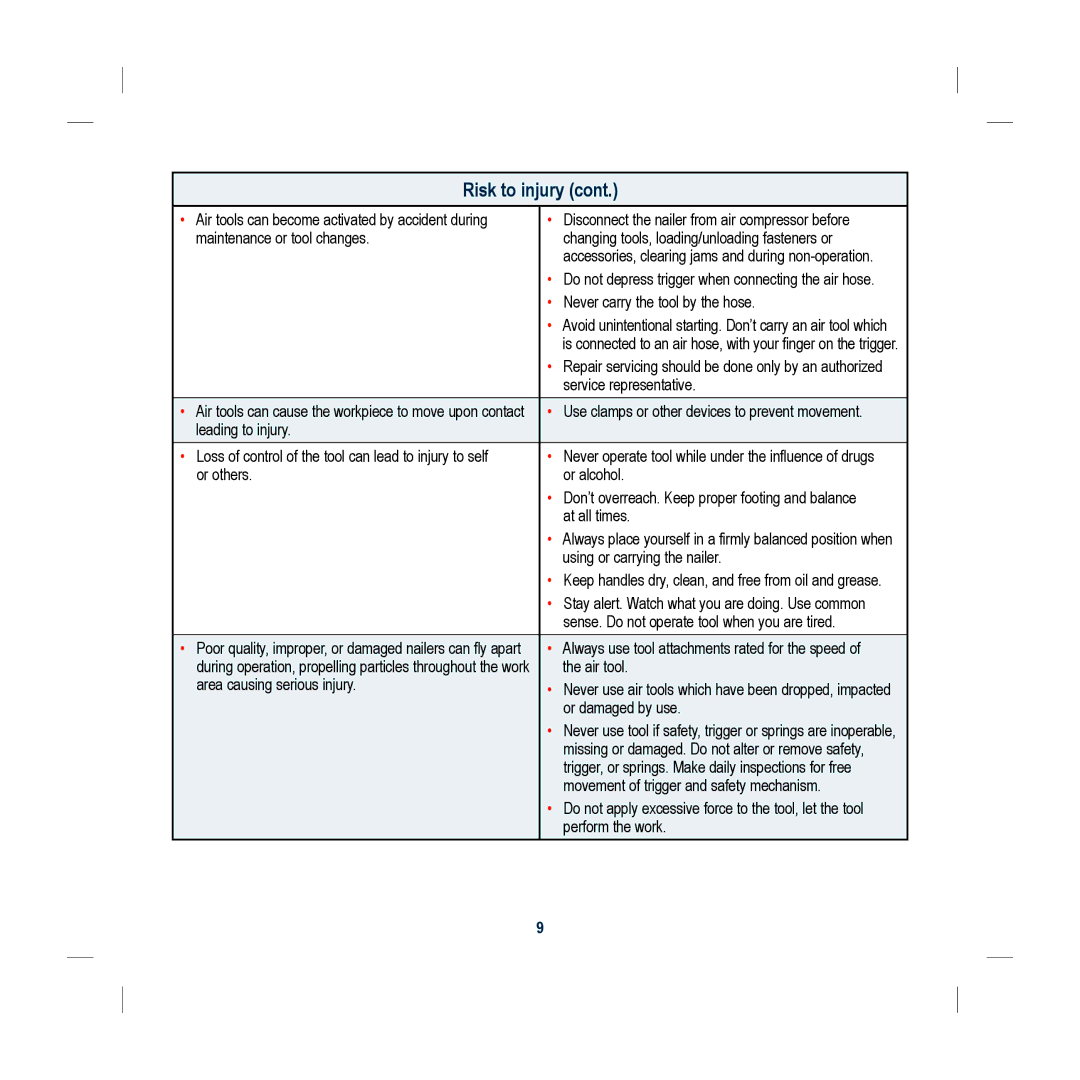
Risk to injury (cont.)
• Air tools can become activated by accident during | • Disconnect the nailer from air compressor before |
maintenance or tool changes. | changing tools, loading/unloading fasteners or |
| accessories, clearing jams and during |
| • Do not depress trigger when connecting the air hose. |
| • Never carry the tool by the hose. |
| • Avoid unintentional starting. Don’t carry an air tool which |
| is connected to an air hose, with your finger on the trigger. |
| • Repair servicing should be done only by an authorized |
| service representative. |
|
|
• Air tools can cause the workpiece to move upon contact | • Use clamps or other devices to prevent movement. |
leading to injury. |
|
|
|
• Loss of control of the tool can lead to injury to self | • Never operate tool while under the influence of drugs |
or others. | or alcohol. |
| • Don’t overreach. Keep proper footing and balance |
| at all times. |
| • Always place yourself in a firmly balanced position when |
| using or carrying the nailer. |
| • Keep handles dry, clean, and free from oil and grease. |
| • Stay alert. Watch what you are doing. Use common |
| sense. Do not operate tool when you are tired. |
|
|
• Poor quality, improper, or damaged nailers can fly apart | • Always use tool attachments rated for the speed of |
during operation, propelling particles throughout the work | the air tool. |
area causing serious injury. | • Never use air tools which have been dropped, impacted |
| |
| or damaged by use. |
| • Never use tool if safety, trigger or springs are inoperable, |
| missing or damaged. Do not alter or remove safety, |
| trigger, or springs. Make daily inspections for free |
| movement of trigger and safety mechanism. |
| • Do not apply excessive force to the tool, let the tool |
| perform the work. |
|
|
9
